By Yasmine Benaouadj
Mikataishi is not technically a temple, but a pilgrimage site that is run by a lay association instead of monastics. 1200 years ago, Kobo Daishi, a noted priest and founder of Shingon Buddhism, decided to reside here during his pilgrimage across Japan. He set out to carve a statue of Kannon, the Goddess of Mercy also known as Avalokiteśvara, on a slab of granite. Immersed in his venture, Kobo Daishi lost track of time throughout the night until he was alerted of the approaching morning by a rooster. He was forced to leave Mikataishi without finishing his carving, leaving Kannon’s statue with a missing hand. Because of the missing hand, it is said to have healing powers for those who have disabilities in relation to limbs. This “one handed Kannon” was carved out of a boulder, which the main hall was built around. It is a hibitsu (hidden Buddha), covered by doors, waiting to be revealed every 33 years. A stand-in Kannon statue can be seen in the main altar in front of the doors.
This pilgrimage site has been known to be a place for visitors to pray for relief in regard to their disabilities or problems that they have with their limbs or body parts. After their arrival, visitors will pick up a wooden effigy or omamori of the body part they are praying for and take it home. The wooden omamori provided at Mikataishi takes on many forms, including arms, legs, torsos, breasts, etc. After the visitor’s disability or problem is cured, they then bring the omamori back to Mikataishi and leave it behind the outdoor pagoda on a pile of other returned omamori. As you can see in the images below, the pagoda has a massive pile of omamori returned by those who have claimed to be cured since the 19th century.
Upon entering the temple grounds, visitors are greeted by a statue of a rooster to symbolize the founding legend of the rooster that alerted Kobo Daishi that morning was coming. Just behind, there are stairs that lead to the courtyard that contains the outdoor pagoda and pile of omamori to the right. Wooden tablets or ema, contain inscribed wishes by those who visit and are often left at the site in hopes of a deity granting these wishes. It is common in this location to see ema in a rooster shape in memory of the founding legend. Also to the left of the courtyard, there is a dragon fountain that is said to expel holy water from a nearby spring.
When entering the main hall, there are statues of Kobo Daishi and Kannon. Kobo Daishi, also known as Kukai, was a Japanese Buddhist monk who founded the Shingon sect. He initially followed the cultivation of Buddhism at the age of 14 and learned esoteric techniques when he visited China after he was ordained as a priest. He later brought his teachings to Kyoto and is said to have stopped here at Mikataishi during his travels through Japan. Kannon is a major Mahāyāna bodhisattva in Buddhist sacred texts. Mostly associated with compassion, Kannon is often depicted with many heads and multiple arms, but here at Mikataishi, Kannon is missing an arm to suggest healing powers.
In addition to the statues of Kobo Daishi and Kannon, the main hall has sutras available for viewing that are often used for chanting in rituals. Close by, a woodenfish can be seen. Instruments such as bells, gongs, and drums are used for rhythm and emphasis in rituals and chants. When looking at the ceiling, there are also noticeable stamps from those who have ventured through Mikataishi during their pilgrimages.
Media
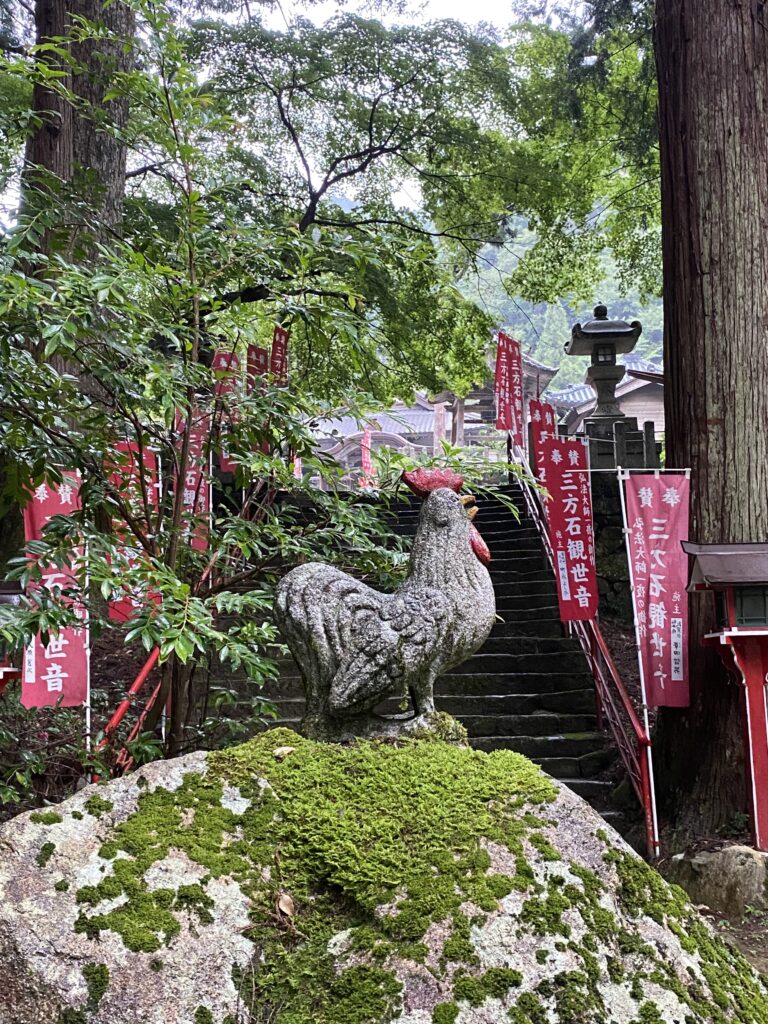
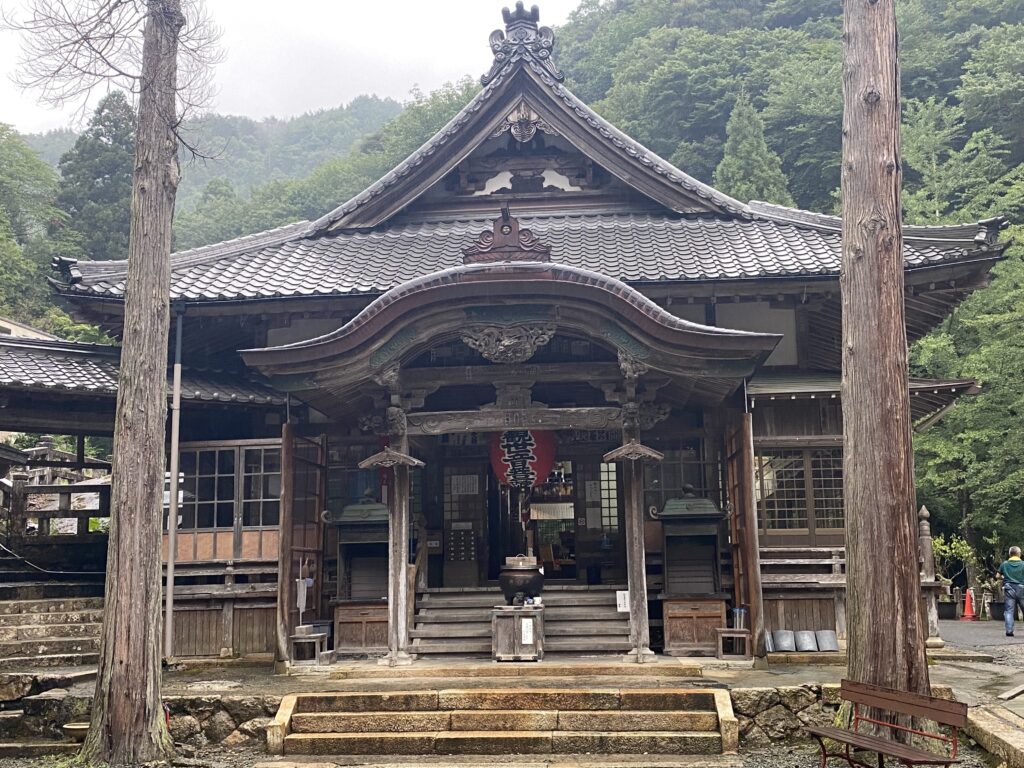
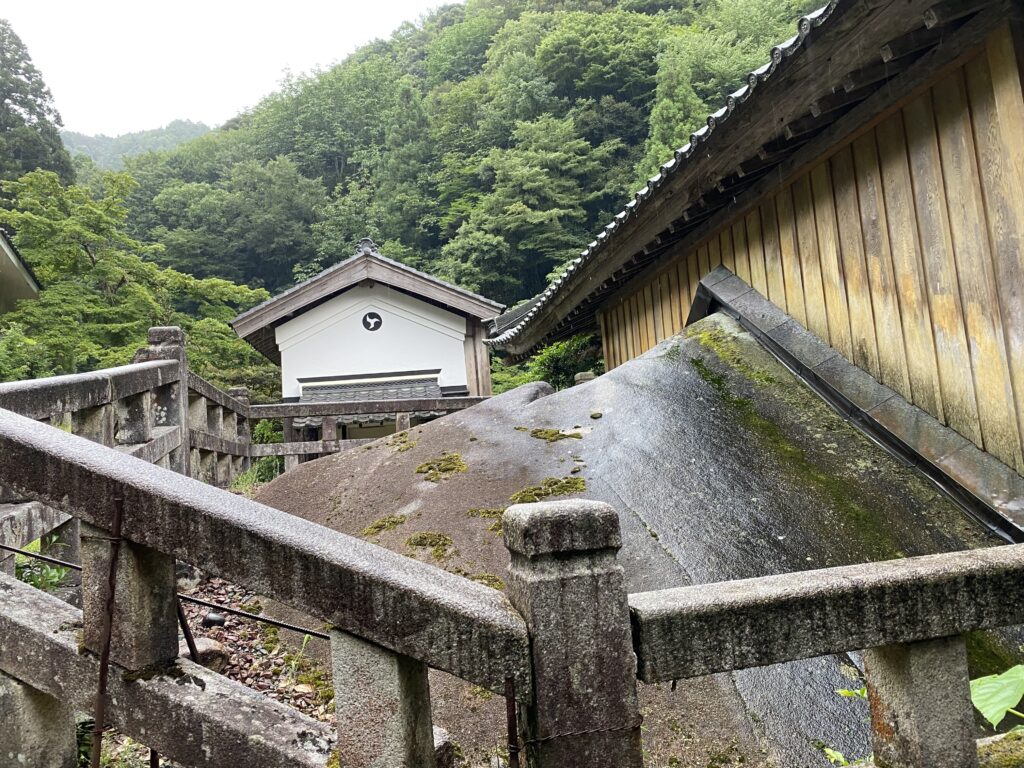
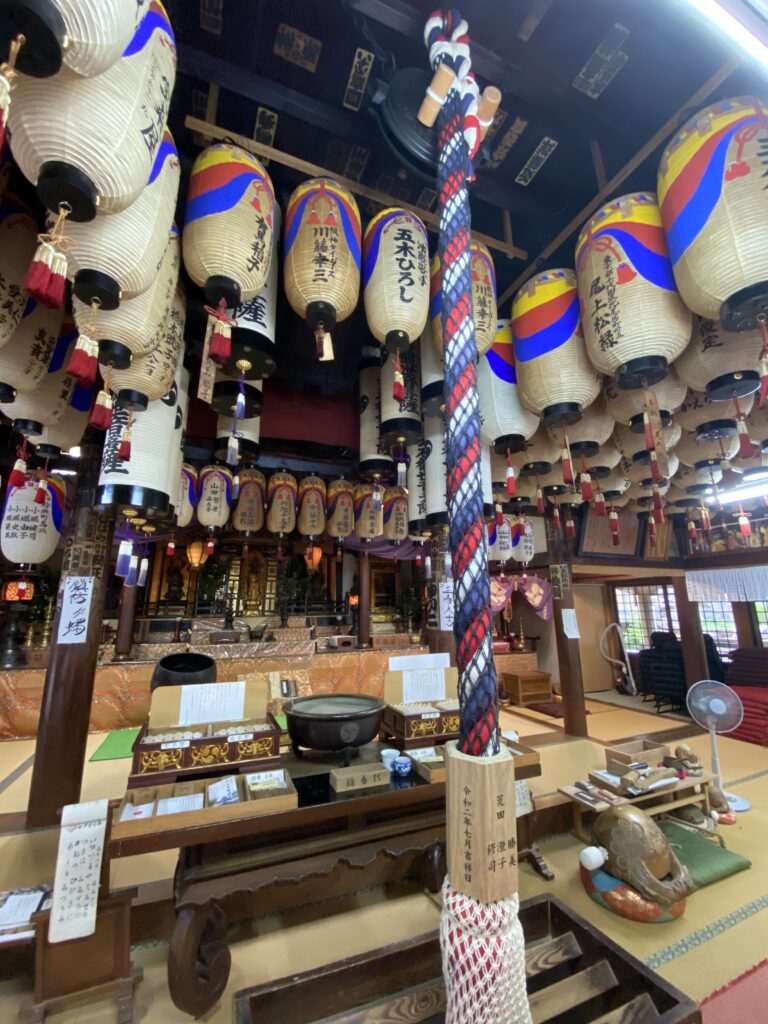
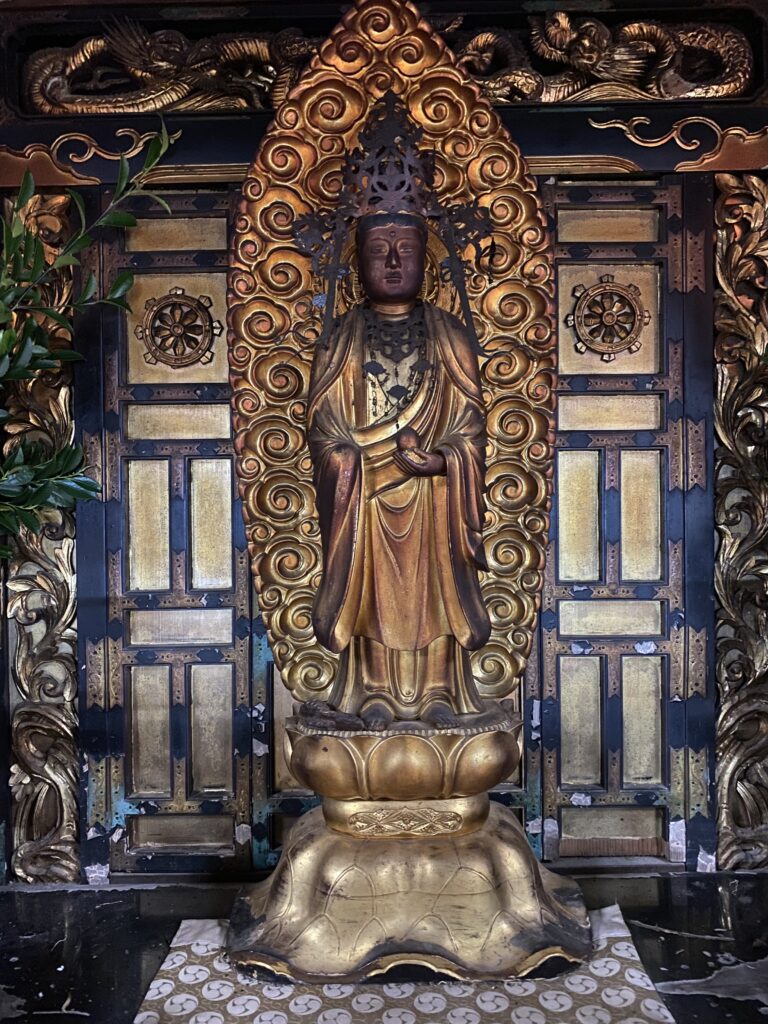
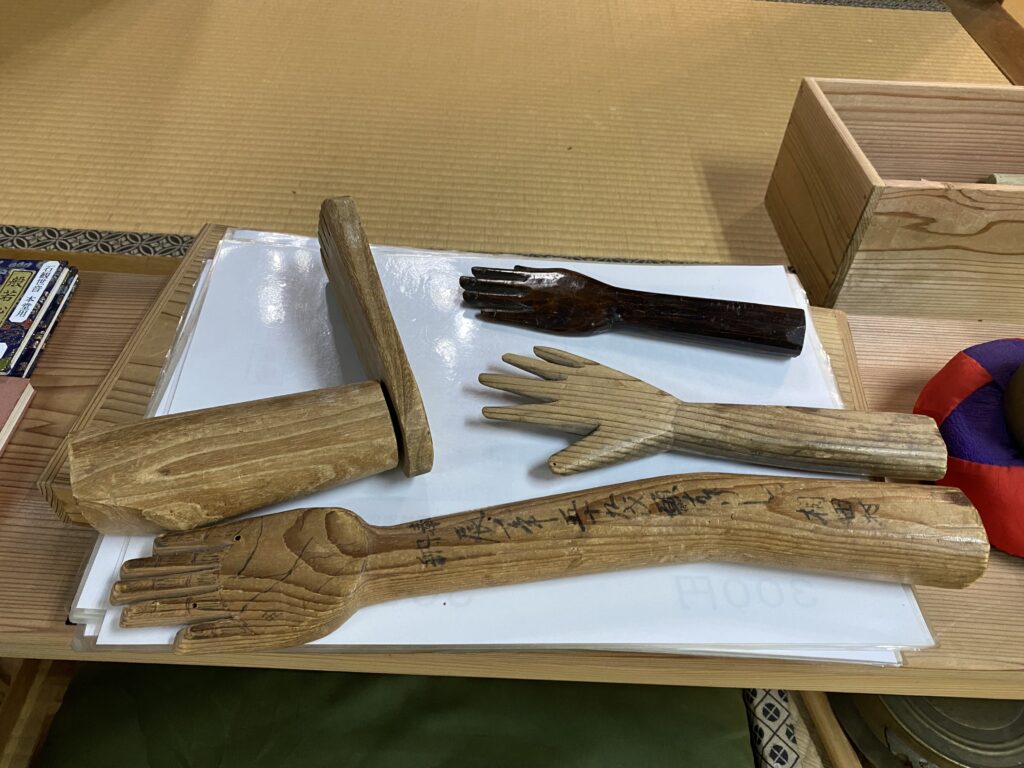
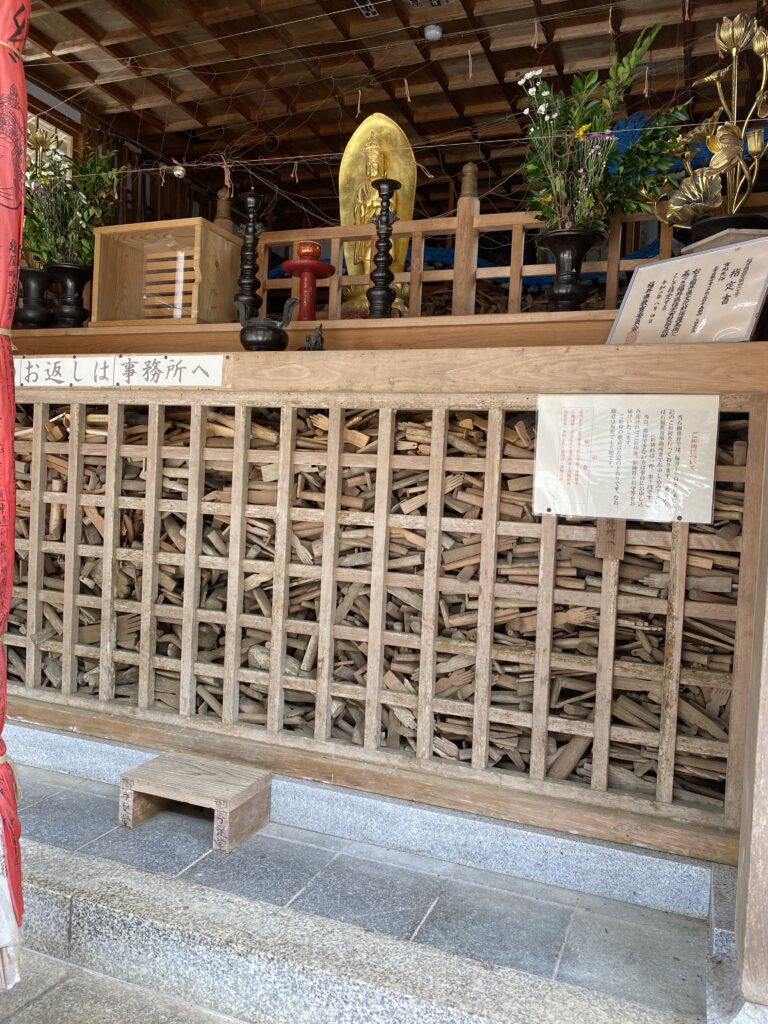
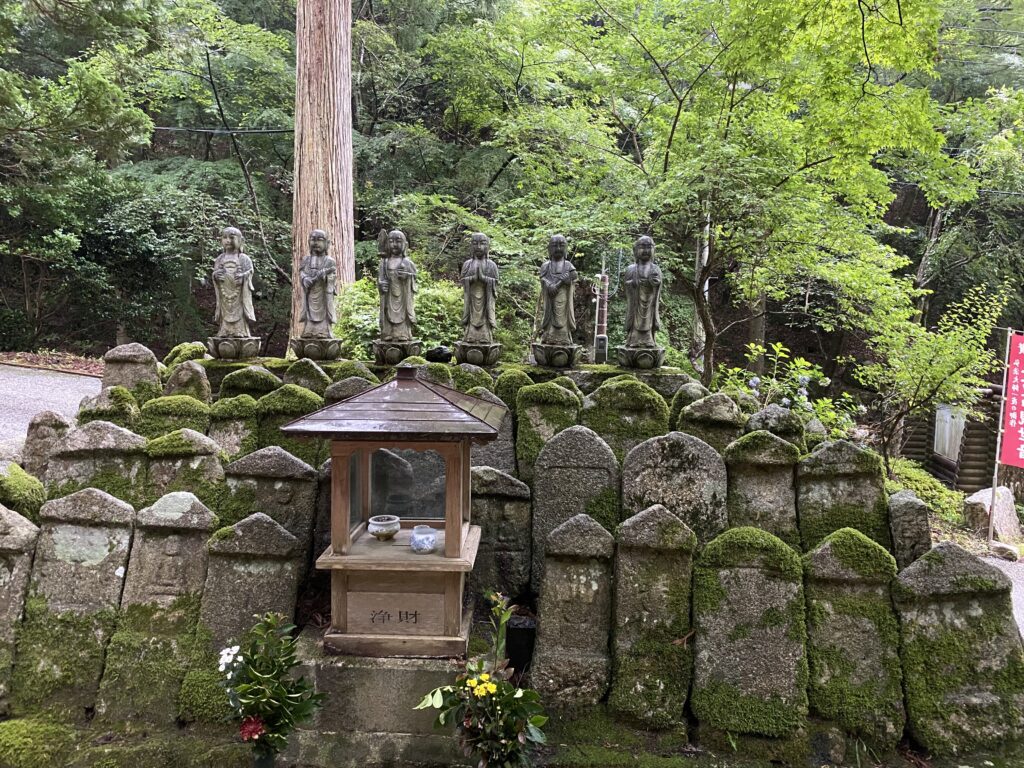
VR Tour
Click here to view the accessible version of this interactive content
Scholarly Sources
- Birnbaum, Raoul. “Avalokiteśvara.” Encyclopedia of Religion, edited by Lindsay Jones, 2nd ed., vol. 2, Macmillan Reference USA, 2005, pp. 704-707.
- Irons, Edward A. “Koya, Mt.” Encyclopedia of Buddhism, edited by J. Gordon Melton, Facts on File, 2008, pp. 294-295.
- Irons, Edward A. “Shingon.” Encyclopedia of Buddhism, edited by J. Gordon Melton, Facts on File, 2008, pp. 444-445.
- Miles, M. “Disability in an Eastern Religious Context: Historical Perspectives.” Disability & Society, vol. 10, no. 1, 1995, pp. 49-70.
External Links
- Wikipedia contributors. “Hibutsu.” Wikipedia, The Free Encyclopedia. Wikipedia, The Free Encyclopedia, 30 Sep. 2023.
- Wikipedia contributors. “Omamori.” Wikipedia, The Free Encyclopedia. Wikipedia, The Free Encyclopedia, 21 Jun. 2023
- Wikipedia contributors. “Wooden fish.” Wikipedia, The Free Encyclopedia. Wikipedia, The Free Encyclopedia, 18 Aug. 2023
